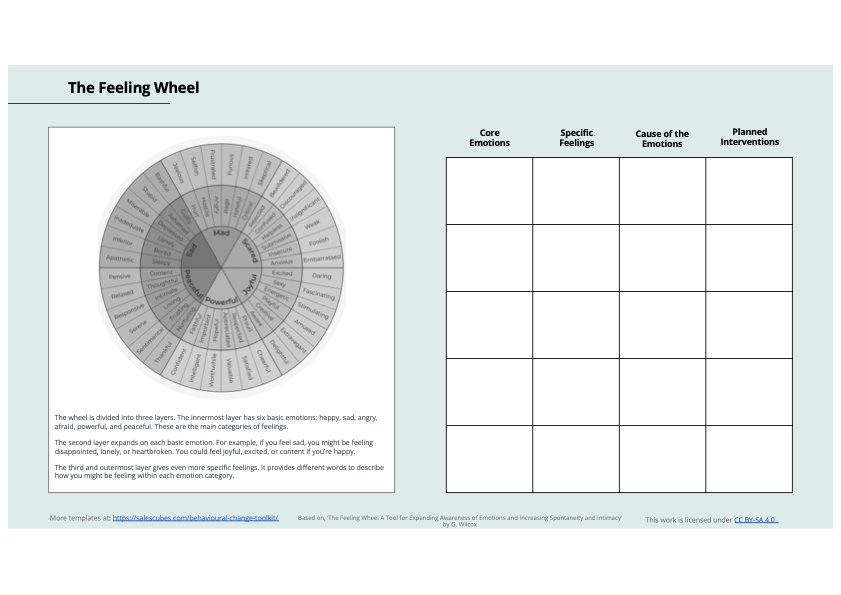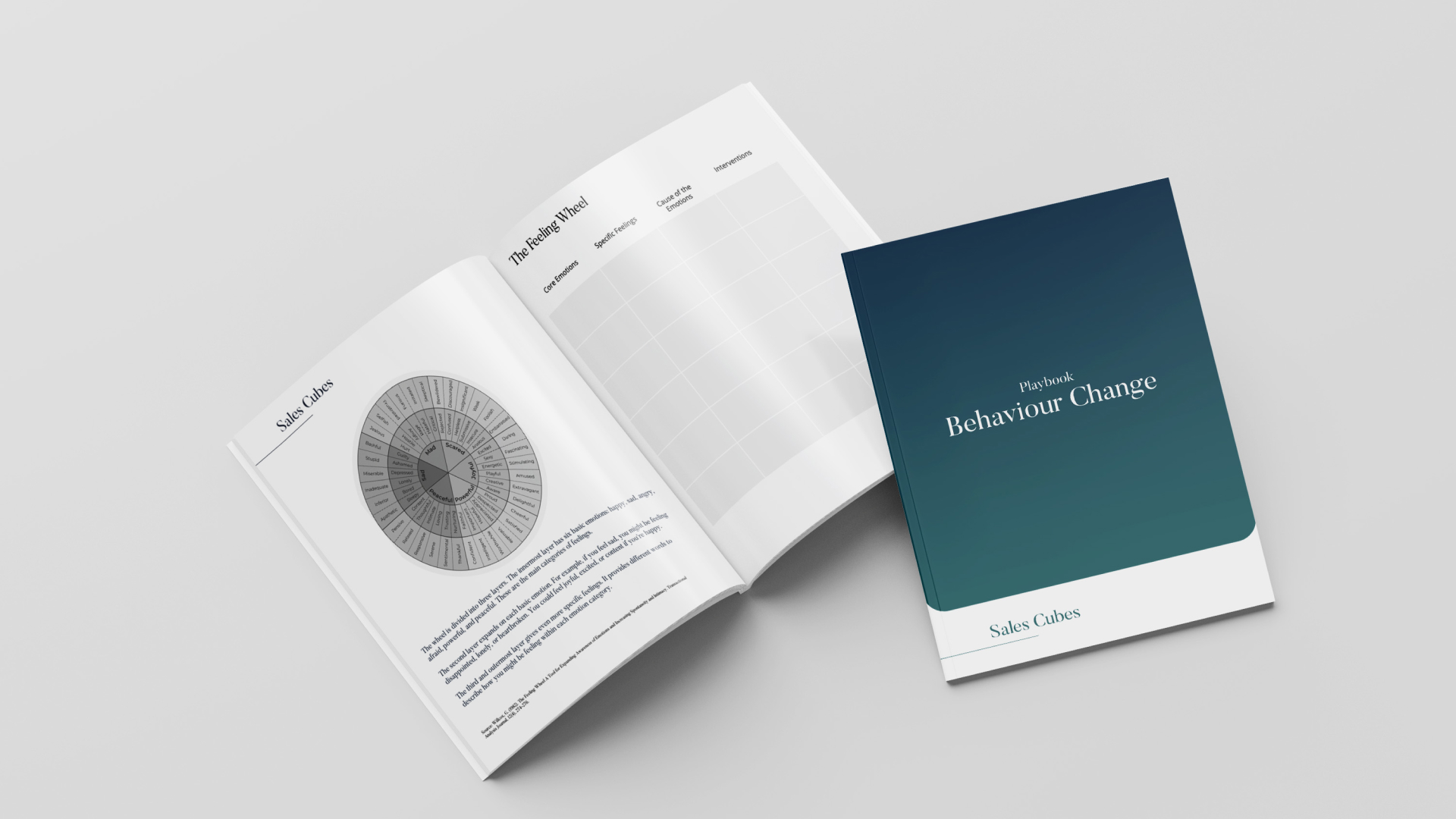What is it?
Inspired by Joseph Zinker‘s concept of viewing the therapist as an artist and Robert Plutchik‘s analogy of emotions to colours, Wilcox developed the Feelings Wheel. This visual aid helps people accurately identify and express their emotions. It categorises 72 feelings under six primary emotions: sadness, anger, fear, joy, empowerment, and peace. Each of these emotions is then broken down into more detailed feelings, offering a more nuanced insight into one’s emotional state.
How useful is it?
The Feeling Wheel helps individuals accurately identify their emotions, it facilitates better communication, self-awareness, and emotional regulation. This tool is particularly beneficial for those who struggle to express their feelings or recognise their emotional states.
Applications
The Feeling Wheel can be applied in various contexts:
-
- Personal Development: Individuals can use it to better understand their emotional responses and triggers.
-
- Counselling and Coaching: Professionals can use it to help clients articulate their feelings and work through emotional challenges.
-
- Workplace: It can be used in team settings to enhance emotional awareness and empathy among colleagues.
When implementing a behavioural change process this tool can be particularly useful to coach individuals who have strong feelings of resistance towards the change. The tool enables the coach to identify the right emotion during the coaching process. This tool is mainly used during the Active Listening stage of the Behaviour Change Stairway Model also available in this toolkit.
Process
Step 1. Identify the Core Emotion: Start by identifying which of the six core emotions you are feeling. Begin with the inner ring to identify which core emotion you’re experiencing.
Step 2: Narrow Down the Specific Feeling: Look at the more specific feelings associated with that core emotion to pinpoint exactly what you are experiencing. Move to the middle ring to refine your understanding and get closer to the specific feeling.
For example, if you identify ‘sad’ as your core emotion, you might find that ‘lonely’ or ‘rejected’ more accurately describes your specific feeling. Finally, if needed use the outer ring to find the exact word that describes your emotional state.
Step 3: Reflect on the Cause: Consider what might be causing this specific emotion. This reflection can lead to deeper insights into your emotional triggers and patterns.
Express or Address the Emotion: Use this understanding to communicate your feelings to others or to take steps to address your emotional needs.
Sources:
- G. Willcox, 1982, The Feeling Wheel, A Tool for Expanding Awareness of Emotions and Increasing Spontaneity and Intimacy, Transactional Analysis Journal
- Lauren Grimes, 2021, “How To Use The Feelings Wheel To Regulate Your Emotions And Improve Your Emotional Literacy As A Leader“, Hustle & Lush
- Willcox G., The Feeling Wheel, www.gnyha.org
Tool



